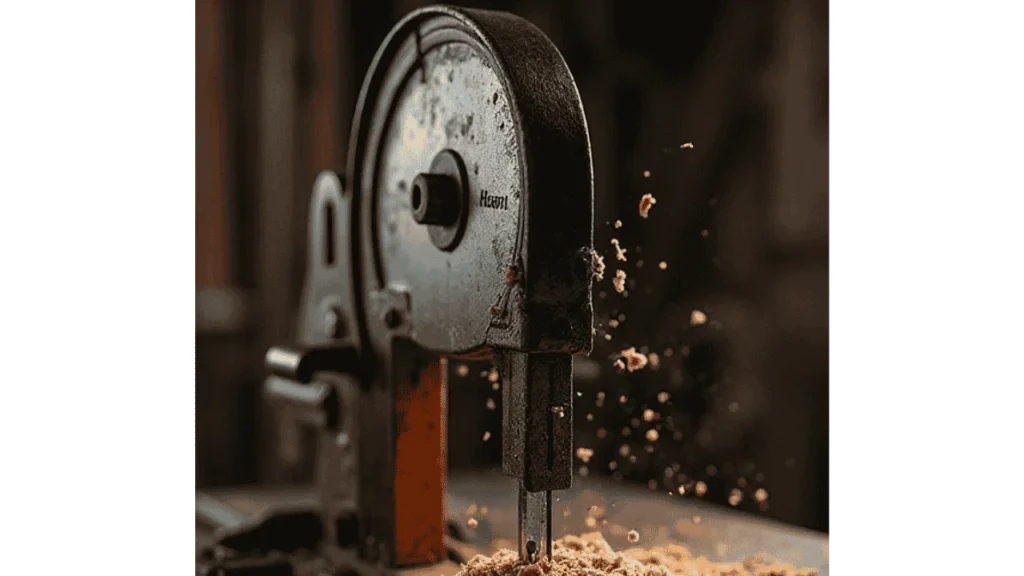A bandsaw is a versatile power tool featuring a continuous loop of toothed metal blade, capable of making precise straight, curved, or irregular cuts. You can use it on a variety of materials, including wood, metal, and plastic. From my experience, a bandsaw is invaluable in both professional and home workshops because it allows for intricate and accurate cuts that are difficult to achieve with other saws. Understanding how to use a bandsaw safely is essential due to the potential hazards associated with its powerful blade. Proper knowledge ensures both efficiency and safety during your projects.

Essential Safety Tips Before Operating a Bandsaw
Before you begin, always wear the correct personal protective equipment (PPE), including safety glasses or goggles and hearing protection. Avoid loose clothing that can catch on the blade. Inspect your bandsaw to make sure the blade is sharp, properly installed, and that the blade guard is correctly positioned. Keep your workspace clean and free of distractions to maintain focus. Never wear gloves while operating the saw, as this can reduce your grip and increase the risk of accidents.
“Prioritizing safety before starting your work prevents injuries and ensures smoother, more precise cuts,” emphasizes tool safety expert Karen Miller.
Setting Up the Bandsaw
Begin by installing the blade suitable for your material and task, following the manufacturer’s instructions. Adjust the blade tension to ensure accurate cuts and prevent damage. Properly position the blade guides and bearings close to the material to support the blade and prevent deflection.
“Correct setup of guides and tension ensures straight, clean cuts and reduces the risk of blade breakage,” notes woodworking technician Tom Harris.
Adjust the blade guard so it sits just above the material, minimizing exposure to the blade. Finally, check that the blade runs parallel to the table and fence to maintain straight cuts.
You Might Also Like: What is a Bandsaw Used For?
Operating the Bandsaw
Mark your cut line clearly using a pencil or chalk. Position the material flat and stable against the fence or miter gauge. Turn on the saw and allow the blade to reach full speed before feeding the material. Push the material steadily into the blade while maintaining control and keeping your hands clear of the cutting path.
“Moving the material too fast is a common mistake; slow, steady feed ensures accuracy and safety,” says professional carpenter Sarah Lopez.
Once the cut is complete, turn off the saw and wait for the blade to come to a complete stop before removing the material.
Making Curved Cuts
For curved cuts, select a blade with a smaller width to navigate tighter curves. Make relief cuts inside the waste area to prevent binding and ease the turning radius. Guide the material slowly and steadily with both hands, letting the blade do the work. Avoid forcing the material, as this can cause the blade to wander, bind, or even break. Careful, controlled movement ensures smooth curves and precise results.
Related: How to Change a Bandsaw Blade?
After Use
Always turn off the bandsaw and wait for the blade to stop before making any adjustments. Release the blade tension to prolong its lifespan. Clean the saw thoroughly, removing sawdust and debris from the table and surrounding area. Inspect the blade for signs of wear or damage and replace it if necessary.
“Regular cleaning and inspection after each use keeps your bandsaw running safely and efficiently for years,” says tool expert Jack Harris.
FAQs
Can I use a bandsaw to cut metal?
Yes, with the appropriate metal-cutting blade, a bandsaw can cut metal pipes, rods, and structural profiles.
How do I know when my bandsaw blade needs replacing?
Signs include dull or ragged cuts, increased resistance during cutting, and visible damage to the blade.
Is it safe to operate a bandsaw without a blade guard?
No, always use the blade guard as intended to protect yourself from potential injuries.
Can I use a bandsaw to cut curves?
Yes, by using the appropriate blade and making relief cuts, a bandsaw can cut intricate curves in various materials.
How often should I perform maintenance on my bandsaw?
Regularly inspect the bandsaw before each use, and perform more thorough maintenance, such as cleaning and blade inspection, periodically as recommended by the manufacturer.
Final Takeaways
Maintaining a bandsaw through proper setup, operation, and after-use care ensures safe and accurate cuts every time. Choosing the correct blade for your material and type of cut improves efficiency and reduces wear on the tool. Always prioritize safety by wearing appropriate PPE, following proper operating procedures, and maintaining a clean and organized workspace. When used correctly, a bandsaw is an incredibly versatile and reliable tool for any woodworking, metalworking, or fabrication project.
- How to Cut a Straight Line with a Jigsaw? - October 31, 2025
- How to Cut a Circle with a Jigsaw? - October 31, 2025
- Can You Cut Acrylic with a Jigsaw? - October 31, 2025
